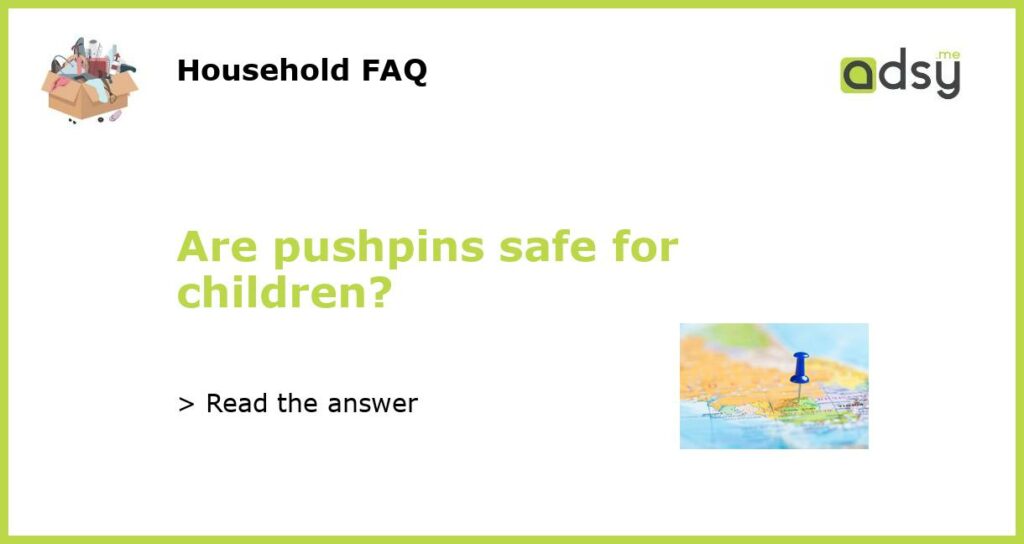What are pushpins?
Pushpins are a type of fastener commonly used for attaching objects, such as paper, to walls or bulletin boards. They consist of a metal or plastic pin with a sharp point and a flat round head. Pushpins are often used in offices, classrooms, and homes for organization and decoration purposes. They can be found in various sizes, colors, and designs, making them popular among different age groups.
Potential risks of pushpins for children
While pushpins can be useful tools, they can also pose a risk, especially when it comes to children. Here are a few potential dangers associated with pushpins:
- Sharp point: The sharp point of a pushpin can cause injury if not handled properly. Children may accidentally prick themselves or others with the pin, leading to puncture wounds or other injuries.
- Choking hazard: Pushpin heads are usually small and can be a choking hazard for young children who are prone to putting objects in their mouths. Swallowing a pushpin can lead to serious health consequences.
- Accidental ingestion: Similar to the choking hazard, young children may accidentally ingest a pushpin, which can lead to blockages or injury to the digestive system.
- Unsafe play: Children may misuse pushpins during play, potentially leading to injuries. They may use pushpins as makeshift weapons or in other dangerous ways.
Tips for using pushpins safely around children
Although pushpins can present risks, there are precautions you can take to ensure the safety of children around these fasteners:
- Keep pushpins out of reach: Store pushpins in a secure location that is inaccessible to young children. Make sure they are out of sight and out of reach.
- Supervise usage: When children need to use pushpins under adult supervision, ensure that they understand the potential dangers and how to handle them safely. Watch closely to prevent accidents.
- Use alternative methods: Consider using safer alternatives to pushpins, such as adhesive hooks or tape, when children are present. These options can still be effective for hanging items without the associated risks.
- Teach safety rules: Educate children about the dangers of pushpins and how to handle them safely. Teach them about the sharp point and the need to avoid putting pushpins in their mouths or using them inappropriately.
- Use child-safe versions: If pushpins are necessary, look for child-safe versions that have larger, more secure heads and blunter points. These are designed to minimize the risk of injury.
Other childproofing considerations
Childproofing your home or any environment where children spend time is crucial for their safety. Here are a few general tips to consider:
- Secure sharp objects: Store all sharp objects, including pushpins, knives, scissors, and other potentially dangerous items, in locked cabinets or drawers.
- Secure furniture: Ensure that heavy furniture, such as bookshelves or cabinets, are securely anchored to the wall to prevent tipping accidents.
- Cover electrical outlets: Use outlet covers or childproof caps to prevent young children from accessing electrical outlets.
- Install safety gates: Use safety gates to block off access to stairs or areas that may pose a risk to young children.
- Remove small objects: Regularly inspect the environment for small objects that can pose a choking hazard and remove them from reach.
Conclusion: Pushpin safety for children
Pushpins can be a useful tool for organization and decoration, but it’s important to exercise caution when children are present. By understanding the potential risks and taking appropriate measures to ensure their safety, you can minimize the likelihood of accidents or injuries involving pushpins. Remember to store pushpins securely, supervise their use, teach children about the dangers, and consider safer alternatives when possible. Childproofing the environment and implementing general safety measures are also essential for overall child safety.






